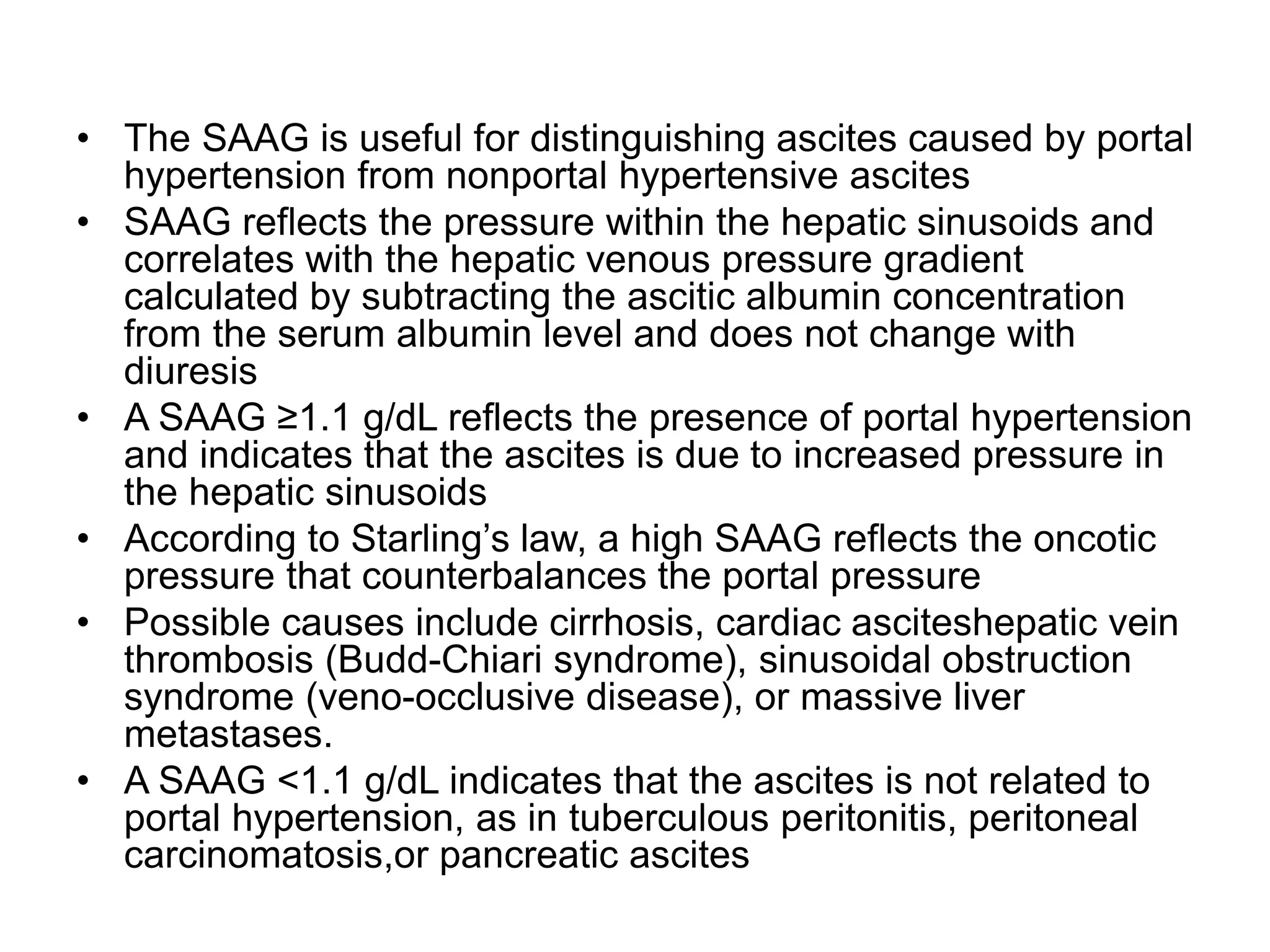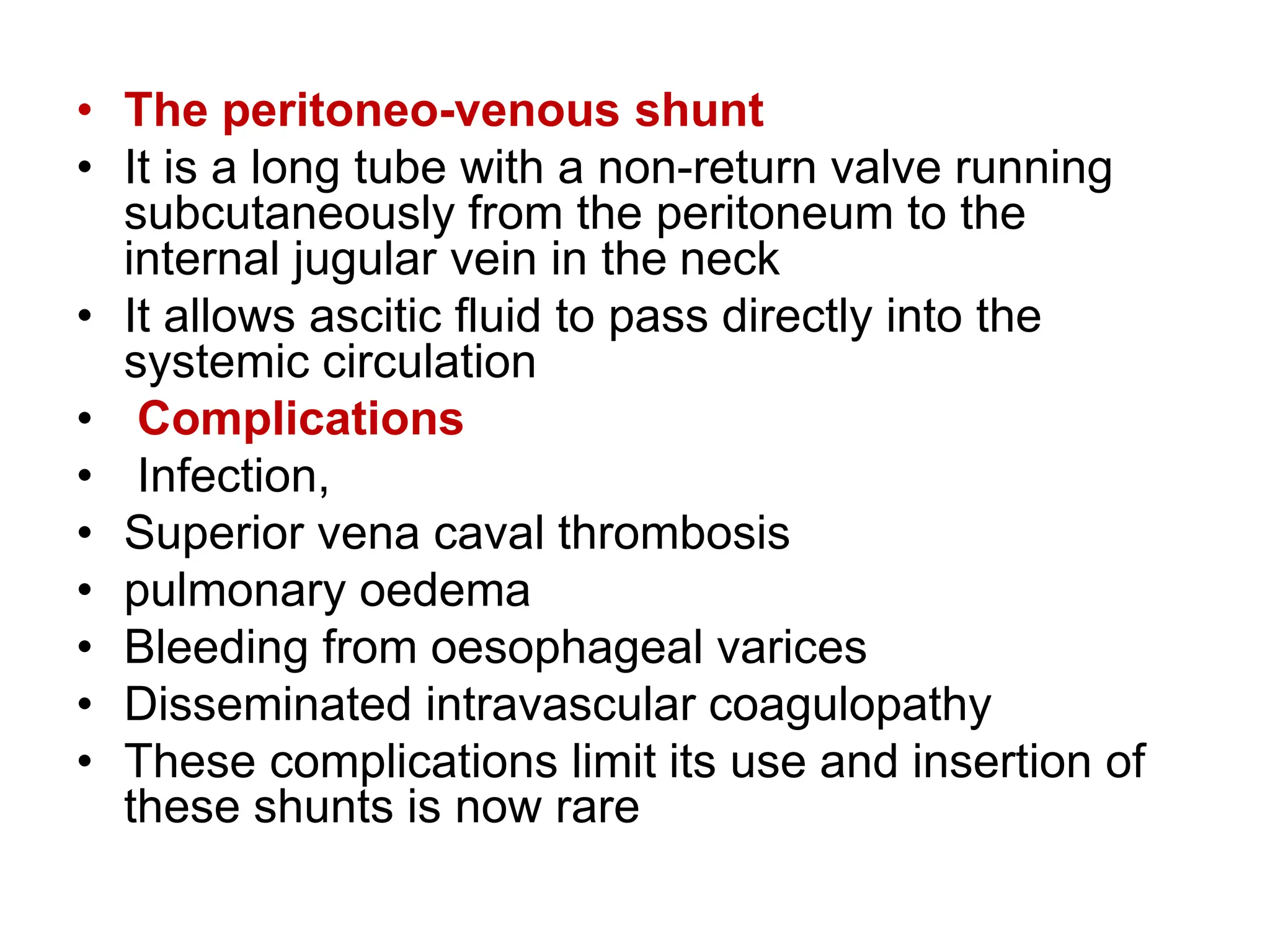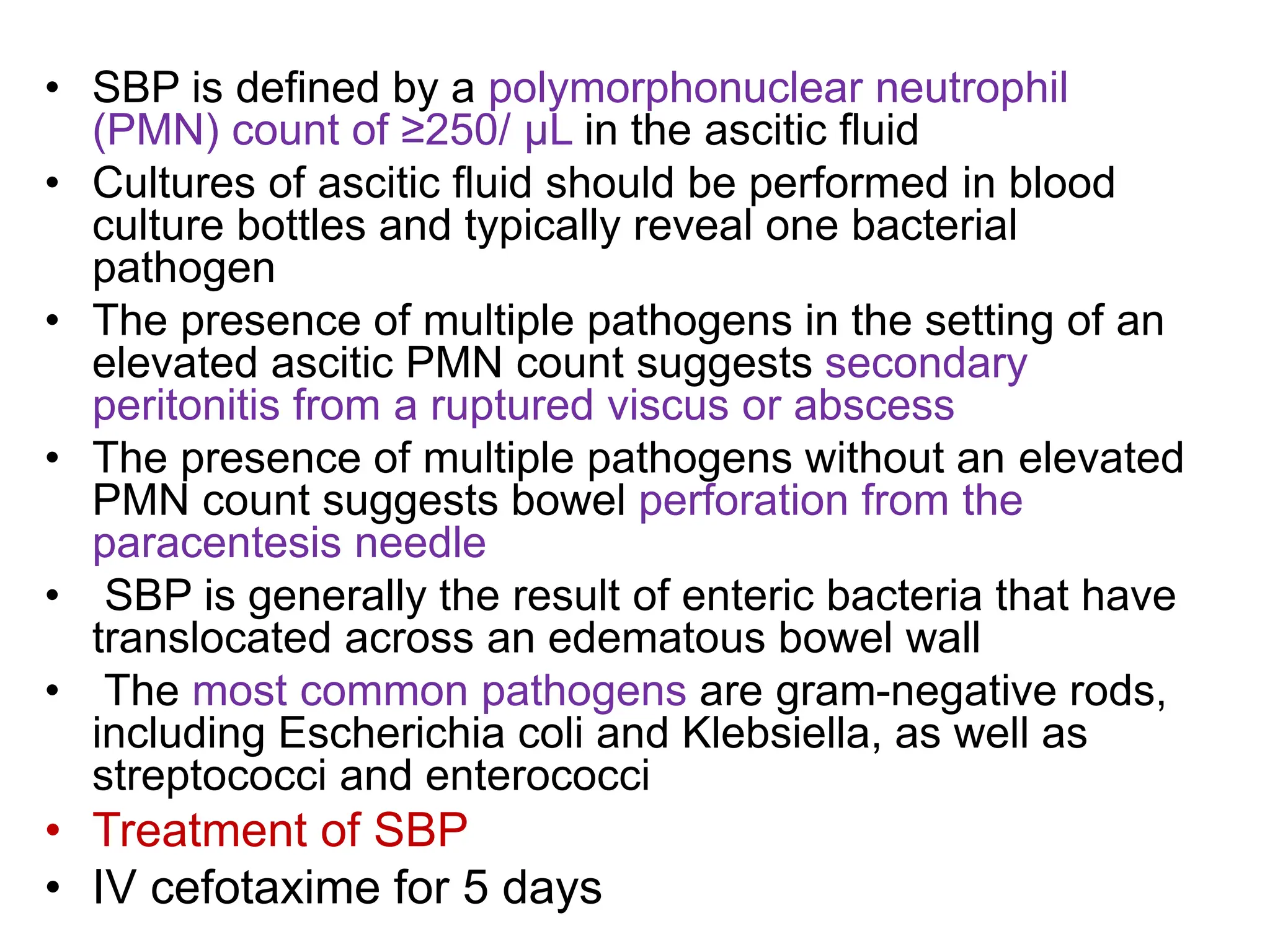This document discusses abdominal swelling and ascites. It defines ascites as the accumulation of fluid within the abdominal cavity, which often results in abdominal distention. The document outlines various causes of abdominal swelling including fat, fluid, feces, fetus, flatus, and fatal growth. It then focuses specifically on ascites, describing the pathogenesis of ascites in the presence and absence of cirrhosis. Evaluation, treatment, and management of ascites is also discussed including paracentesis, diuretic therapy, and refractory ascites.




































